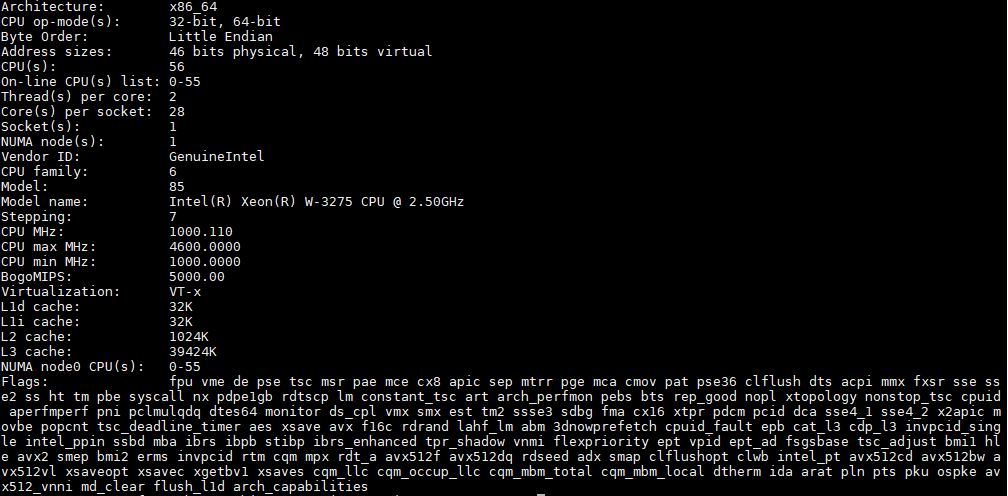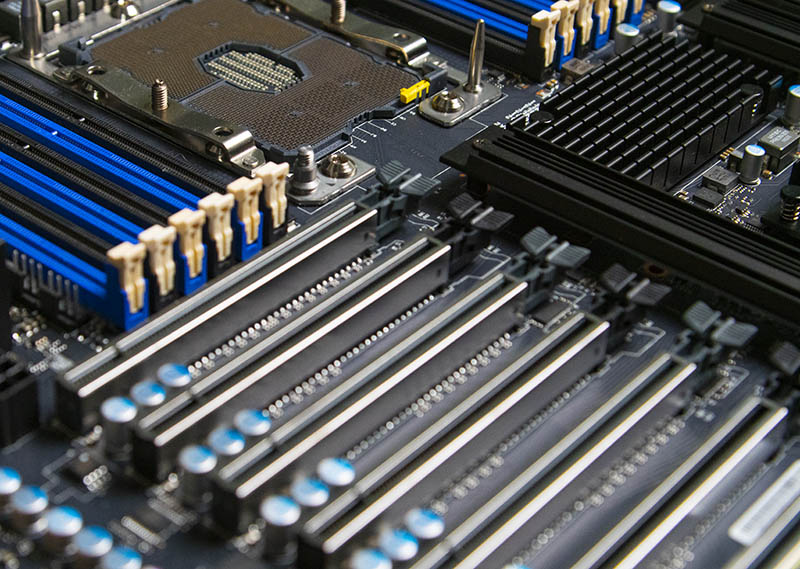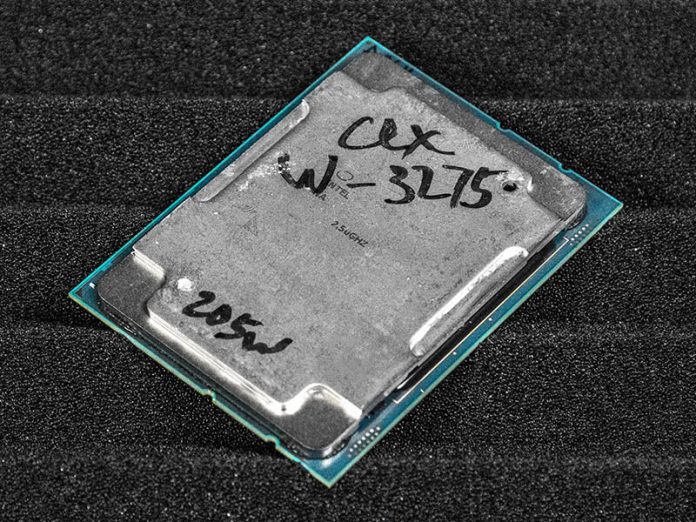When it comes to halo products, the Intel Xeon W-3275 certainly fits the description. This is Intel’s fastest single-socket Intel Xeon W-3200 series processor. It is also its fastest publicly available 28-core LGA3647 Xeon SKU in its Cascade Lake generation. For the workstation market, Intel increases maximum turbo speeds, removes multi-socket capabilities, and adds in the ability to handle 16 more PCIe 3.0 lanes for a total of 64. If you want to talk about a halo product, this is it, more so than the LGA2066 Xeon W-2200 series that was just launched. The Xeon W-3275 sits above and in this article, we are going to show benchmarks and why it is an important processor in the market.
Key stats for the Intel Xeon W-3275: 28 cores / 56 threads with a 2.5GHz base clock and 4.4GHz turbo boost. Speeds of up to 4.6GHz can be had with Turbo Boost 3.0. There is 38.5MB of onboard cache. The CPU features a 205W TDP. These are $4,449 list price parts. You can find the full Intel Ark page here.
Here is what the lscpu output looks like for an Intel Xeon W-3275:

These properties look similar to an Intel Xeon Platinum 8280 as they are very similar chips. The Intel Xeon W-3200 series also includes support for new extensions such as Intel DL Boost (avx512_vnni above.)
We should mention here that we are using the standard SKU that supports, at most, 1TB of memory per socket. There is also an “M” SKU, the Xeon W-3275M that supports up to 2TB of memory per socket. Neither support Intel Optane DCPMM, and that is a complete miss. The potential of unlocking new applications with high core count and clock speeds with the Xeon W along with more PCIe lanes and Optane DCPMM support would have had certain high-performance segments salivating.
Test Configuration
For this review, we are using the same Supermicro X11SPA-T that we just reviewed.
- Motherboard: Supermicro X11SPA-T motherboard
- CPU: Intel Xeon W-3275 2.5GHz (28 core/56 thread)
- Cooling: Dynatron 4U CPU Heat Sink
- RAM: 6x 32GB DDR4-2933R SDRAM (25-21-21-47 CR1) Low Profile
- SSD: Samsung PM961 1TB
- OS: Ubuntu 18.04 LTS
Using commodity DDR4-2933 32GB RDIMMs, one gets a nice speed bump from the previous generation DDR4-2666. We have 192GB of memory on this platform using only 6 of the twelve DIMM slots.

The Supermicro X11SPA-T we are using has an enormous amount of I/O and is designed to realistically be used in a workstation chassis, or a 4U rackmount workstation managed like a server from the data center. The motherboard provides a lot of flexibility here.
Next, let us move on to benchmarks.





Is it unlocked as the 3175 chip?
It is not. Intel stopped that with the Xeon W-3175X.
There is a high-memory Xeon W-3275M version if you want to use up to 2TB of RAM with it.
Yeah, I might need that, have a bit over 2Tb of memory laying around :)
In september , STH wrote: “…Adding Intel Optane DCPMM to workstations…”
Will Intel be adding Optane DCPMM support to the w-3200 series??
Definitely would a great all in one small server with quad gpus and persistent memory database!!
Dual socket Xeon Scalable workstations are getting validated with Optane and the cooling for 18W DCPMMs.
Why is the 7702P Linux kernel compile rate so much higher (~35) than in the review for that chip you guys did from a few weeks ago (~22)?
Hi Nh – the 7702P review was done on the old test setup/ firmware, but got pushed due to scheduling. In Q4, we have been re-running everything on platforms we expect to use through mid-2020. The 8280’s, for example, got 0.7% faster there as well. We are keeping everything on the same setup, but that is one that moved significantly on the higher core count AMD side. Part of that is that we are using a more mature test platform for the new results. The 7702P is ~32 on the current setup using DDR4-3200 where the 7742 is between 34-35 now as well.
That is why we keep results using the same hardware, kernel, firmware, and etc. all in the same chart and re-test everything when a change happens.
Thanks for the clarification Patrick!